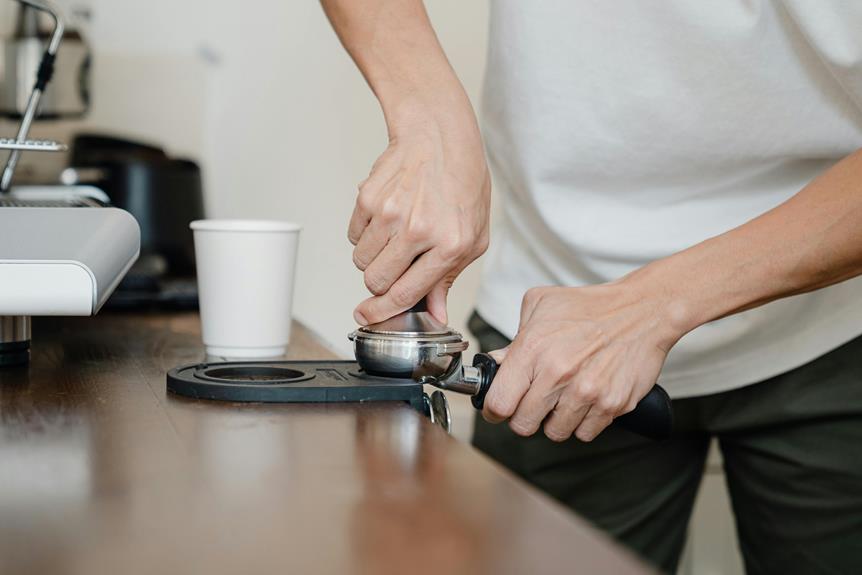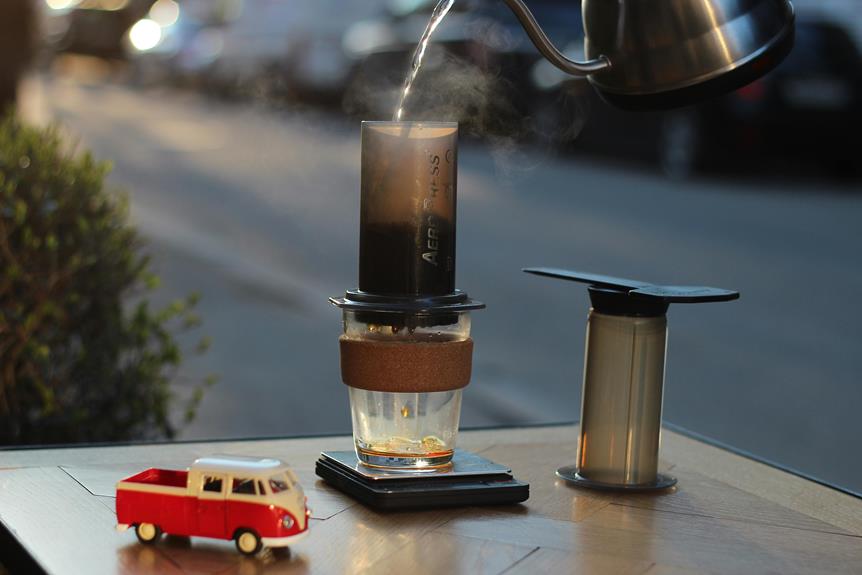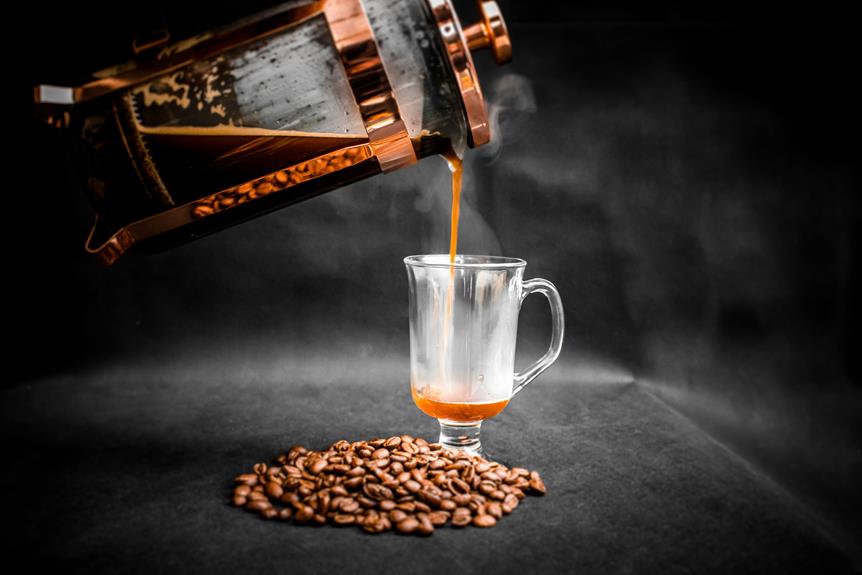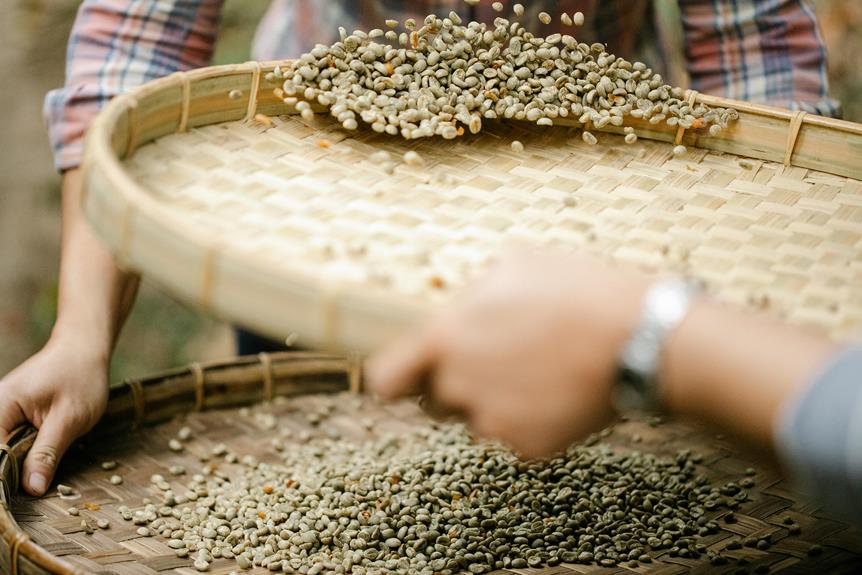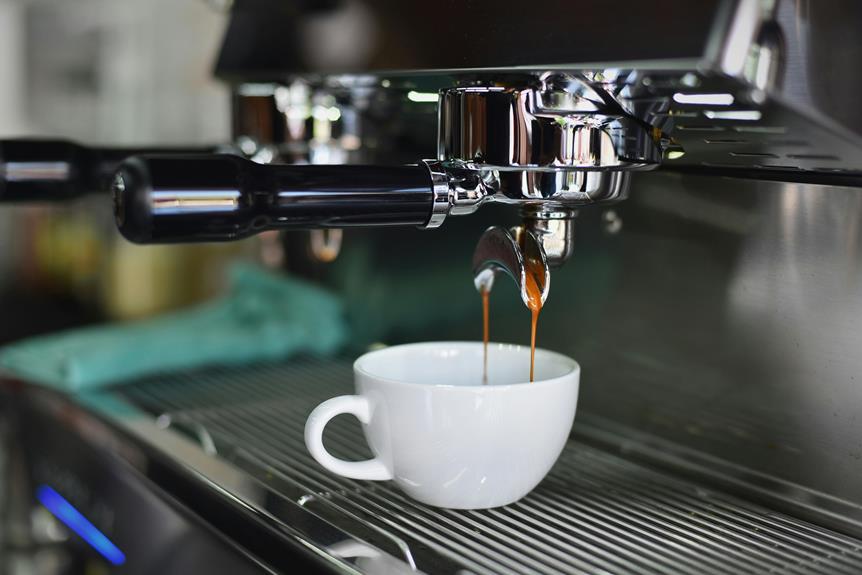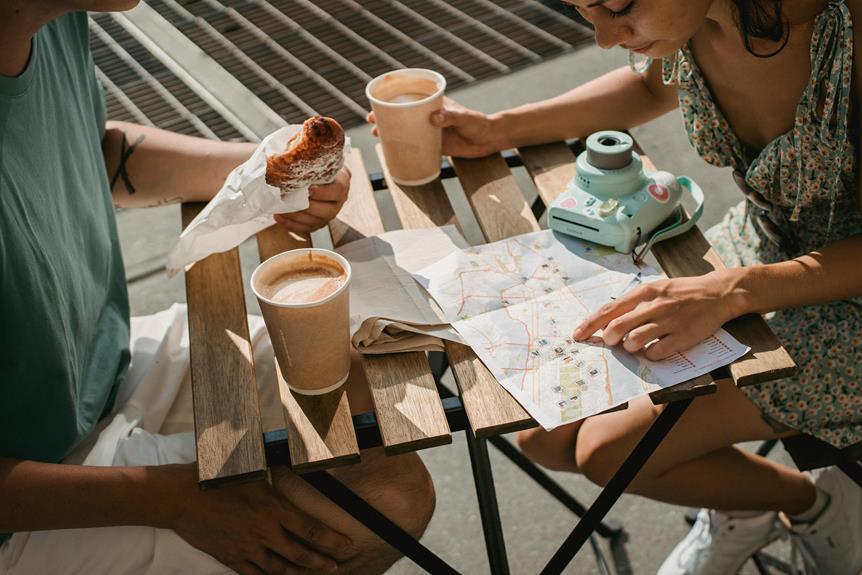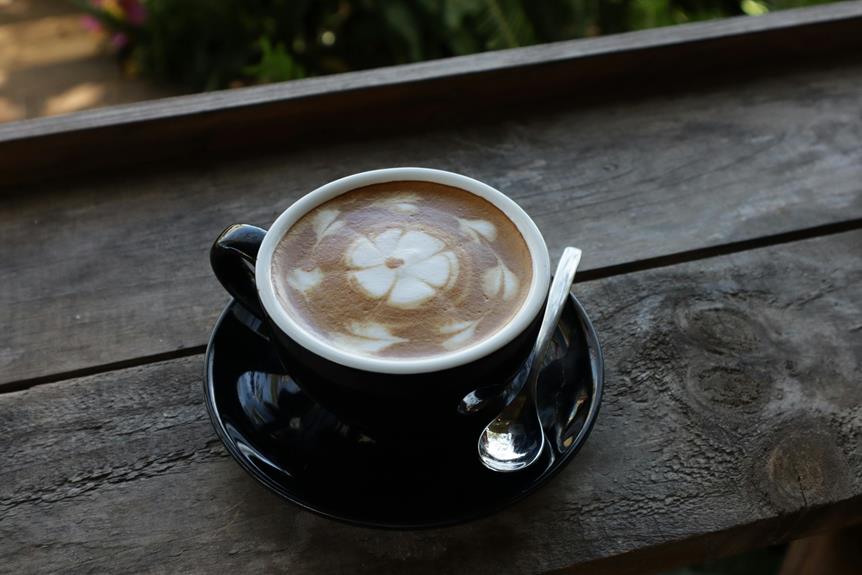You're about to discover the rich flavors and aromas of espresso in the comfort of your own home. Start by choosing the right coffee beans, considering the unique flavor profiles of different regions and roast levels. Next, select an espresso machine that fits your budget and needs, from manual to automatic. Grind your beans to perfection with a burr grinder, and master the art of tamping for even extraction. Then, pull the perfect shot by adjusting grind, temperature, and ratio. Finally, steam and froth like a pro, and troubleshoot common mistakes to refine your skills. Now, take the next step towards espresso mastery!
Key Takeaways
- Choose coffee beans that suit your taste preferences, considering factors like region, roast level, and flavor profile.
- Select an espresso machine that fits your budget and needs, with features like removable parts and a built-in scale.
- Invest in a good coffee grinder, preferably a burr grinder, to ensure a consistent grind size and flavor preservation.
- Master the art of tamping by developing a consistent technique, using the right tools, and applying gentle pressure.
- Experiment with different roast levels, grind sizes, and brewing techniques to find the perfect balance for your machine and beans.
Choosing the Right Coffee Beans
You'll want to select high-quality coffee beans that are freshly roasted and suitable for espresso roasting, as they'll greatly impact the flavor and quality of your espresso shots.
When choosing the right coffee beans, think about the bean origin. Beans from different regions have unique flavor profiles, so finding one that suits your taste preferences is vital.
For instance, beans from Ethiopia are known for their fruity and floral notes, while those from Brazil offer a smoother, nuttier flavor.
The roast level is another key factor in the selection process. Espresso roasts are typically darker, with a deeper, richer flavor.
A medium to dark roast will provide a more intense, bold flavor, while a lighter roast will result in a brighter, more acidic taste.
You may want to experiment with different roast levels to find the one that works best for you.
Selecting Your Espresso Machine
With your ideal coffee beans in hand, it's time to find an espresso machine that can bring out their full flavor potential.
You'll want a machine that's easy to use, clean, and maintain. Look for features like removable parts, a stainless steel or copper body, and a built-in scale. These will make Machine Maintenance a breeze, ensuring your machine stays in top condition.
Next, consider your Budget Considerations. Espresso machines can range from under $100 to over $1,000.
Set a realistic budget and stick to it. If you're just starting out, a manual or semi-automatic machine might be a good option. They're more affordable and will still give you a great espresso. Automatic machines are more expensive, but they're convenient and require less effort.
When choosing a machine, think about your lifestyle and needs.
Do you want a compact machine for small kitchens or a larger one with more features? Research different brands and models, reading reviews and watching videos to find the best fit for you.
Grinding Coffee to Perfection
Now that you've got your espresso machine, it's time to focus on grinding your coffee beans to perfection, as this essential step can make all the difference in the flavor and quality of your espresso shots.
To achieve grind consistency, you'll need to invest in a good coffee grinder. There are two main types: blade and burr grinders.
Burr grinders are the preferred choice, as they produce a consistent grind size and don't generate heat, which can damage your beans.
When grinding, aim for a fine, even grind that resembles kosher salt. This will facilitate perfect flavor extraction during brewing.
Freshness preservation is also key, so grind your beans immediately before brewing to prevent stale flavors.
Store your coffee beans in an airtight container to preserve their flavor and aroma.
Mastering the Art of Tamping
Tamping, a crucial step in the espresso-making process, requires precision and technique to facilitate even extraction and prevent channeling.
You'll need to develop a consistent tamping technique to facilitate the coffee grounds are uniformly compressed, allowing for ideal water flow during brewing.
Start by selecting the right tamping tools for the job. A stainless steel or tamper with a flat base is ideal, as it provides a solid surface for compressing the grounds.
When tamping, place the tamper on top of the grounds and apply gentle, consistent pressure. Aim for about 30 pounds of pressure, but don't overdo it – you don't want to compact the grounds too densely.
Use a level or straight edge to check your tamper's alignment, verifying it's parallel to the countertop. Practice different tamping techniques, such as the 'polish' or 'spin' method, to find what works best for you.
Pulling the Perfect Espresso Shot
The first step is to verify your machine is at the ideal temperature, usually between 195°F and 205°F.
Next, adjust the grind of your coffee beans to the perfect fineness, as this will affect the shot timing. Aim for a shot that takes around 20-30 seconds to pour, as this indicates the ideal flow rate.
Now, it's time to focus on crema formation. Crema is the creamy texture that forms on top of a well-made espresso shot.
To achieve this, you'll need to adjust the tamping pressure and the coffee-to-water ratio. Experiment with different ratios to find the perfect balance for your machine and beans.
As you pull the shot, pay attention to the flow rate and the crema formation. With practice, you'll be able to pull a perfect espresso shot every time, with a rich, velvety crema that's sure to impress.
Steaming and Frothing Like Pro
With a perfect espresso shot in hand, it's time to turn your attention to steaming and frothing milk like a pro, as this is where the art of creating a velvety-smooth cappuccino or latte really comes alive.
You'll need to master the steam wand, the tool that transforms milk into a silky, creamy delight.
To get started, pour cold milk into a stainless steel pitcher and place it under the steam wand.
Turn on the steam and gently swirl the milk to create a whirlpool effect.
This helps to incorporate air and create the perfect milk textures.
As you steam, listen for the pitch to change, indicating that the milk has reached the ideal temperature.
Stop steaming when you reach the desired consistency, then froth the milk by holding the pitcher at an angle and gently swirling it.
With practice, you'll be able to create a variety of milk textures, from silky microfoam to thick, creamy froth.
Troubleshooting Common Mistakes
Even the most skilled baristas encounter issues, but it's how you identify and correct them that sets you apart from the rest.
As a beginner, you'll face common mistakes that can affect the taste and quality of your espresso. One of the most critical errors isn't maintaining clean equipment. Failing to clean your machine and accessories regularly can lead to old coffee oils and residue building up, resulting in a bitter taste.
Another mistake is falling into old habits. You might be used to making coffee a certain way, but that method mightn't work for espresso. For instance, using the wrong coffee-to-water ratio or not tamping the grounds correctly can lead to a poor shot.
To troubleshoot, take a step back and assess your process. Identify what's going wrong and make adjustments accordingly. Don't be afraid to experiment and try new techniques until you get it right.
Frequently Asked Questions
Can I Use Tap Water for Making Espresso at Home?
You're wondering if tap water is okay for making espresso at home. Honestly, it's not ideal due to varying Water Quality. Consider investing in Filter Systems to purify your water for a smoother, better-tasting espresso.
How Often Should I Clean My Espresso Machine?
You're like a gardener tending to a delicate flower, nurturing your espresso machine to brew perfect cups. Clean it every 3-6 months to descale, ensuring a longer machine longevity and preventing bitter flavors from building up.
What Is the Ideal Room Temperature for Espresso Brewing?
You'll want to maintain an ideal room temperature between 68-72°F (20-22°C) for perfect espresso brewing, as temperature fluctuations can affect flavor and humidity control is essential to prevent moisture buildup in your machine.
Can I Reuse Coffee Grounds to Make Another Shot?
You're tempted to reuse coffee grounds, but don't! Reusing them will lead to a dull flavor profile and more coffee waste. Fresh beans guarantee a richer taste, so start fresh for each shot to avoid disappointing your taste buds.
How Long Does It Take to Develop a Good Espresso-Making Habit?
It takes 66 days to form a habit, so you'll be sipping like a pro in no time! To develop a good espresso-making habit, make it a daily grind by incorporating it into your morning ritual – you'll be hooked in two months!
Conclusion
You've brewed your way to the finish line!
Now, as you savor the fruits of your labor, remember that mastering espresso at home is a journey, not a destination.
Like a rich, velvety crema, your skills will continue to unfold with each shot, revealing new flavors and textures.
So, don't be afraid to experiment, adjust, and push the boundaries of your craft – after all, practice is the perfect grind.

